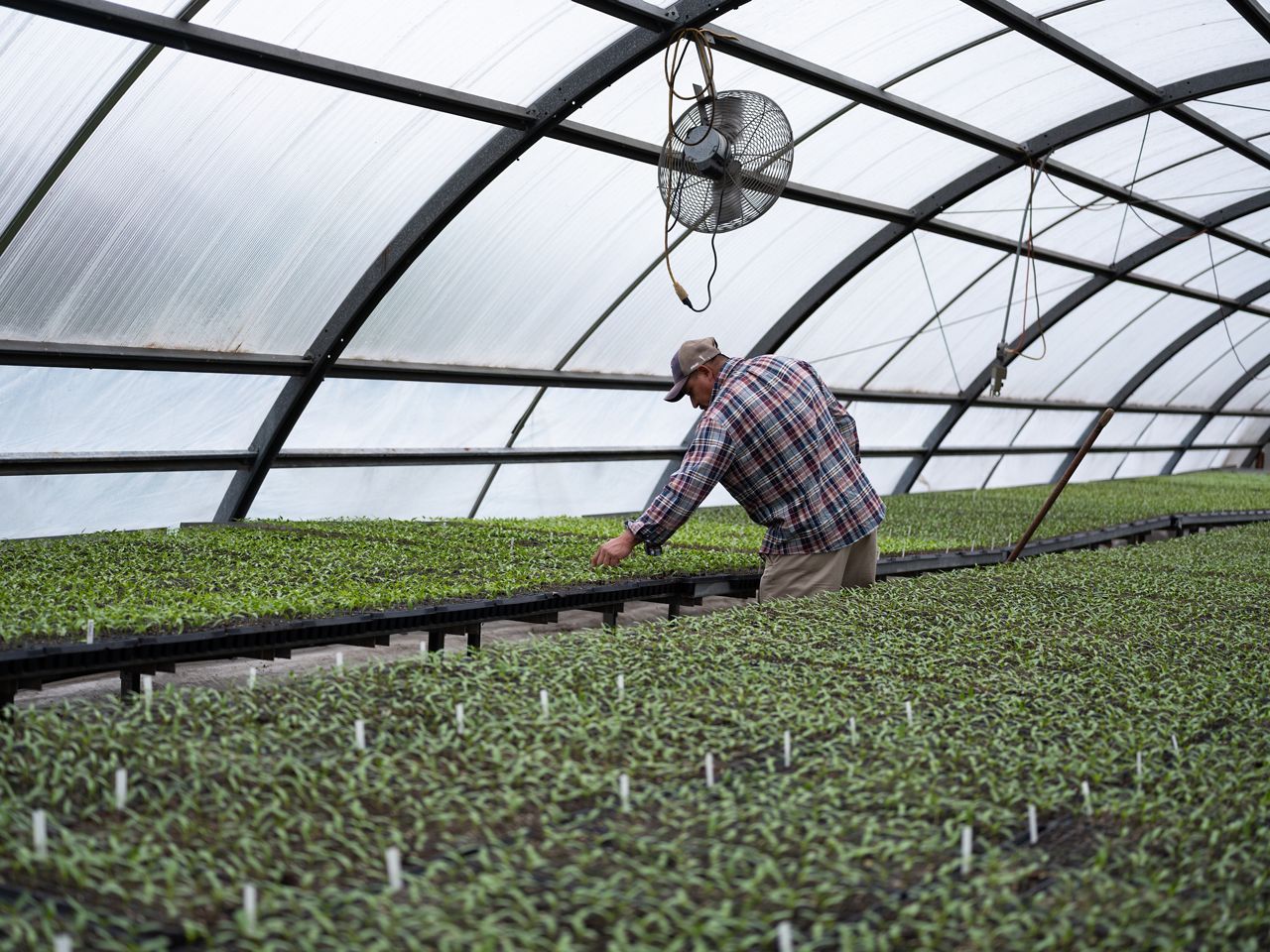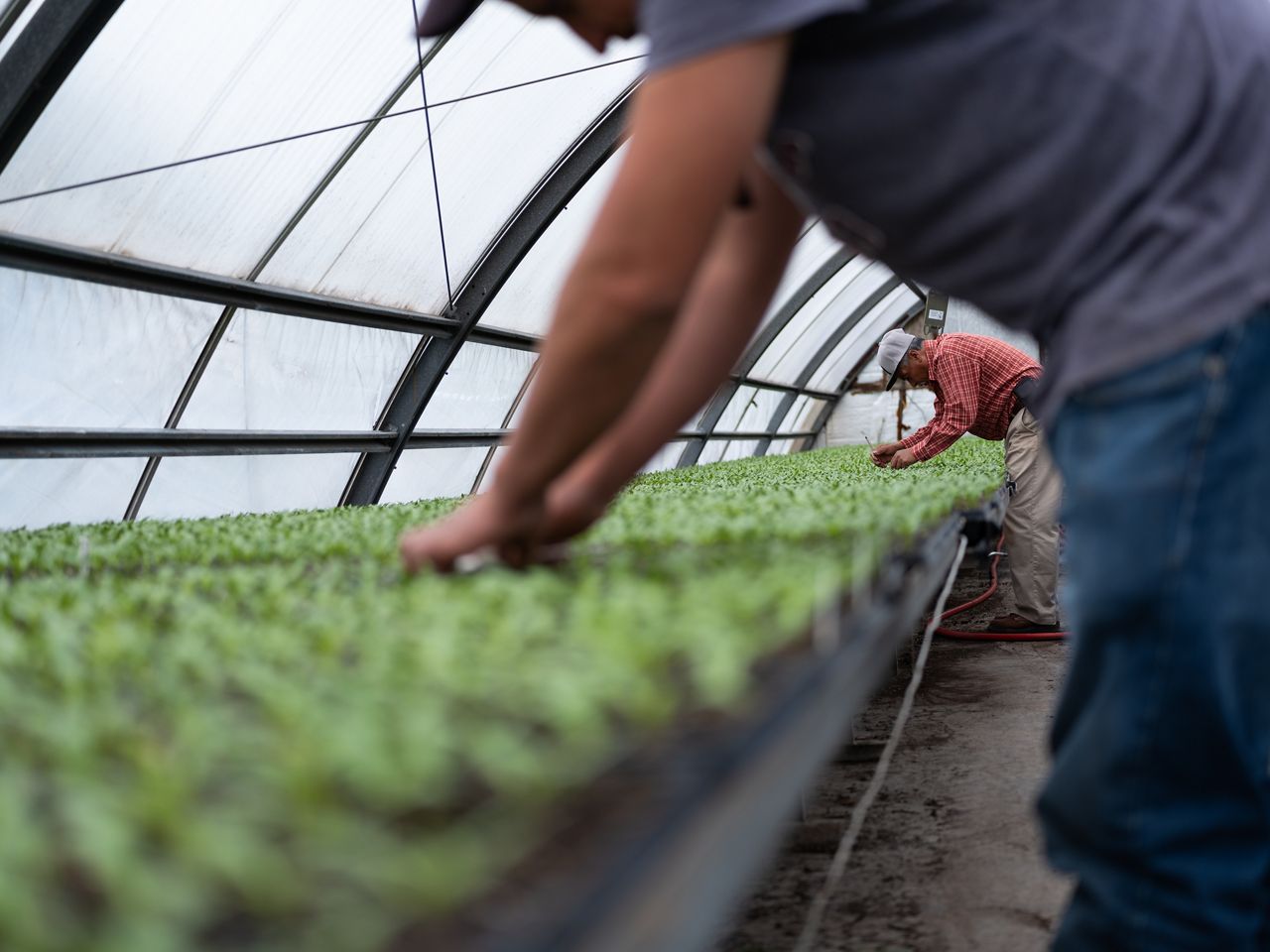Labor challenges are ongoing for many New York farmers, with some opting to bring foreign workers through the seasonal agricultural worker visa program, H-2A.
“We’ve been using the H-2A program for close to 20 years,” said Brian Reeves, an owner of Reeves Farm that raises a variety of vegetables on 300 acres in Baldwinsville.
The program comes with some challenges and can be expensive but in the end offers them a workforce that they can rely on, Reeves said. He recalls why they began using the program in the first place.

“After 9/11, there was some tightening [of the border], and I always thought we had documented workers. They showed me good documents, so I figured they were good,” Reeves said. “Well then it was early May, and where we would normally have 20 to 25 guys, we still only had like 12.”
This was concerning because on June 1, they begin picking strawberries, and without enough workers, the berries would perish in the fields.
“So that was the first year we filed for an emergency petition for H-2A workers. We figured we better bite the bullet because we’ve got to have the help,” Reeves said.
A requirement of the visa program is that farmers provide housing for their workers, which is regulated by the New York state Department of Health. The housing has specific regulations such as number of bathrooms, sinks and bedrooms, and square footage per person.
“The first agency you’ll deal with is the county health department. They will examine your housing and note any deficiencies. You won’t be able to get any help or have an application even go through until they sign off on the housing,” Reeves said.

Once the housing is approved, farmers then have to advertise these jobs locally and demonstrate a need for foreign workers.
“The theory is that if I can find enough domestic workers, I don’t need H-2A but that virtually never happens. There are not enough people that want to do this work,” Reeves said.
Once the need is shown, New York state signs off on the application and then the U.S. Labor Department reviews the application. Farmers must provide detailed job descriptions for each person that they want on their farm, and then the federal government makes a decision on the application.
Reeves Farm typically files three separate job orders throughout the year. The first arrives in April, the second in May and the third in June. In total they end up with about 70 workers, many of whom return year after year. They work with a recruiter in Mexico and provide a list of the workers from the year before. Then the recruiter contacts them.
“Every year there might be 60 or so returnees and maybe five to 10 new people. My brother will tell the recruiter, here’s these five individuals, they’ve been here for years and are very reliable. Talk to them first because they’ve probably got a brother or a neighbor they would recommend,” Reeves said.
This is helpful for the recruiter but also for Reeves because it builds community among the workers. The recruiter then organizes interviews at the consulate for the workers, and the farm pays the fees associated with transportation from their homes to the consulate.
The H-2A workers are required to be paid a minimum wage that is set by the federal government called the adverse effect wage rate, and it varies by state. In New York, the wage is $18.83, and farmers must abide by the state’s overtime regulations, so the workers get paid time and a half after 56 hours.
Including all the associated costs, and the minimum wage requires, Reeves estimates that the workers cost him about $24 to $25 per hour.
“You’ve got a lot of expenses there, red tape, and time, there are a lot of forms to fill out, but the good news is, they’re guaranteed legal,” Reeves said. “If we had an immigration raid that took half our help, our crops are highly perishable and so it’s like buying insurance.”
The H-2A program is specifically for seasonal workers, meaning that produce farms raising fruits and vegetables qualify but dairy farms that operate year-round do not qualify. This has led to labor shortages for dairy farmers.

“I have lots of concerns around labor. My first job on a farm was working with 72 other guys that spoke Spanish, and I was the only one that spoke English,” state Commissioner of Agriculture Richard Ball said. “We have the H-2A program but that doesn’t work for dairy because it only works for seasonal workers, but we have a lot of people, a lot of needs and to grow agriculture we need to solve this problem.”
New York dairy farmers have expressed concerns about the immigration crackdown from the Trump administration because of a lack of a guest worker visa program that they can utilize. Industry stakeholders have advocated for a program that would allow people to come to the U.S. for three to five years and work legally on farms.
Reeves also understands why some farms may choose other options to fill their workforce needs.
“I can understand some farms’ hesitancy, it’s going to cost me, what? And all this red tape, and these guys I’ve had for years are not going to be in it, I have brand new ones? You have to ask yourself these questions. I think it boils down to, none of my kids want to do this, I’m 68 years old. I’m just going to hang on for a few more years and take my chances,” he said.


